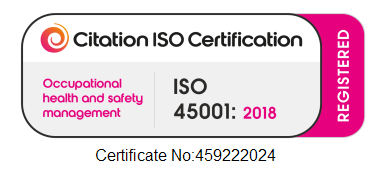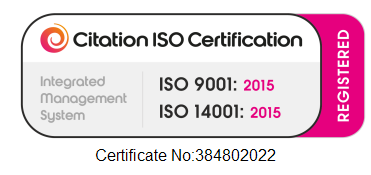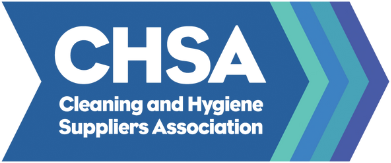Now Stocking BioHygiene
Published on:Why?
For us to add a new product to our range there are lots of considerations, pre-qualification, testing and understanding that have to take place before we commit.
The commercial cleaning market isn't short of choice when it comes to innovation and sustainability but choosing where to put our business and marketing efforts and investment is a decision we don't take lightly.
Having got to know the products and people behind them, we're very confident in advising the BioHygiene range and service to our customers.
How is BioHygiene different to traditional chemicals? The science bit…
Beneficial bacteria are a key ingredient which catalyse on the surface to secret enzymes.
BioHygiene is enzymatic cleaning using Amylase, Cellulase, Lipase, Protease, Uricase which break down starch, veg matter, fats, oils, grease, protein and uric acid.
Free enzymes are used to boost performance to work immediately once sprayed onto a surface.
The days of genuinely sustainable cleaning products not having any cleaning power or being prohibitively expensive, is a thing of the past.
Increasing knowledge whilst improving compliance
Source and BioHygiene take education seriously and encourage all our customers to take advantage of the free resources available. Annual training can help reduce cost, risk and carbon whilst improving knowledge, safety and methods. This will ensure your cleaning team are treated and respect for the professionals that they are.
More information on the BioHygiene industry leading customer portal below.
Harness the power of environmental biotechnology.
‘Biotech’ or ‘eco surfactants’ include microscopic levels of bacteria. This means they can reach areas normal chemicals cannot. For example: carpets and underlay, grout, cracks in tiles, pitted floors (non-slip/Altro) etc. The result? Better cleaning with less effort and no harsh chemicals.
Disinfecting. How?
BioHygiene uses lactic acid from sugar cane for disinfecting. Recent studies have shown lactic-acid based disinfectant was as effective as traditional disinfectants against multiple pathogens, including harder to kill viruses like norovirus and rhinovirus.
Bottles
All plastic bottles from BioHygiene are made from 100% post-consumer recycled plastic. The colour may be slightly inconsistent but this is just a result of the varying plastics used in the recycling process.
Going for B-Corp? Monitoring your carbon footprint? Completing your ISO14001?
BioHygiene and Source know the importance of tracking CO2 upstream and downstream.
For Scope 4 - Transparency Regarding Raw Materials - Raw materials for BioHygiene products are carbon neutral, rapidly biodegradable and non hazardous.
The products proving popular so far...
BioHygiene's Sustainability Commitment
Manufacturing
- ISO 9001:2015 and ISO 14001:2015
- Minimal waste to landfill
- Our wastewater is treated
- Carbon neutral operation
Aquatic and human toxicity
- Minimal aquatic toxicity
- Minimal hazard ratings
- Readily biodegradable ingredients
- Minimal risks to human health
- Not tested on animals
No Single Use Plastic
- Bottles made from Bottles! PCR bottles made from recycled plastic resin creates a closed loop and reduce physical plastic pollution
- Varied dosing platforms, utilising pouch refills
- Sachet solutions are available
- Local manufacture and supply chain
Reduce CO2e by more than 85%
- Renewable and sustainably sourced Ecotechnology can provide a carbon neutral product
- Super concentrates reduce volumes to be transported
- Packaging comes from 50-100% recycled materials reducing CO2e up to 85%
- Local manufacture and supply chain
What BioHygiene Say...
Protecting the Environment isn't a choice, it's a responsibility.
It is widely acknowledged that we have until 2050 to reach a net zero CO2e position globally to prevent serious climate change effects. Very few products or technologies consider their carbon footprint despite data and technology being available, but some, including BioHygiene do.
Long-term studies show how traditional chemical technologies damage the human respiratory system, increase the risk of cancers and cause long-term skin damage. This can be stopped with new technologies rather than utilising CLP classification cut offs to hide the true effects.
Traditional and commonly used chemicals typically have high aquatic toxicity, resist breakdown and bio-accumulate, damaging aquatic life. Scientific evidence has shown that dilution is not the solution and that despite tighter legislation, the only permanent solution is to stop using chemicals that are highly toxic to aquatic life.
Microplastics have been found throughout our oceans and through this have found their way into animal and human food chains. There is an estimated 200 million tonnes in the Atlantic alone and in July 2020, a major study by the Pew Trusts found that on current trends the amount of plastic entering the oceans was likely to triple in the next 20 years.
Best In Class Customer Web Portal
We've not experienced a portal as comprehensive as this. There is everything a distributor and end user customer would need.






